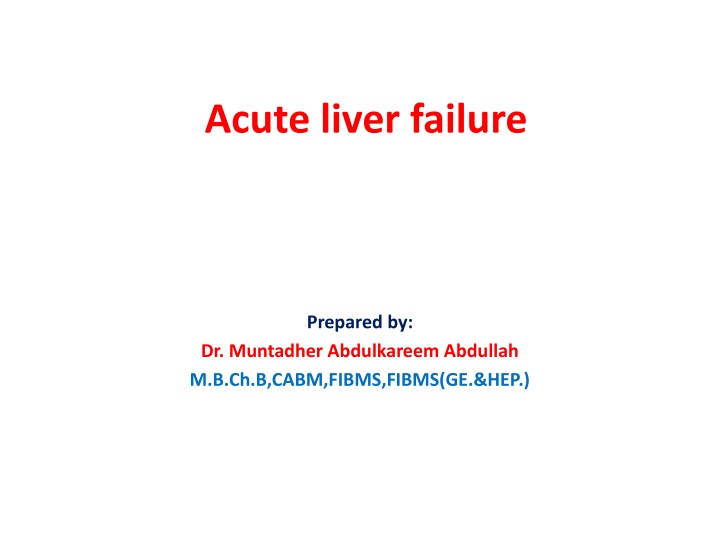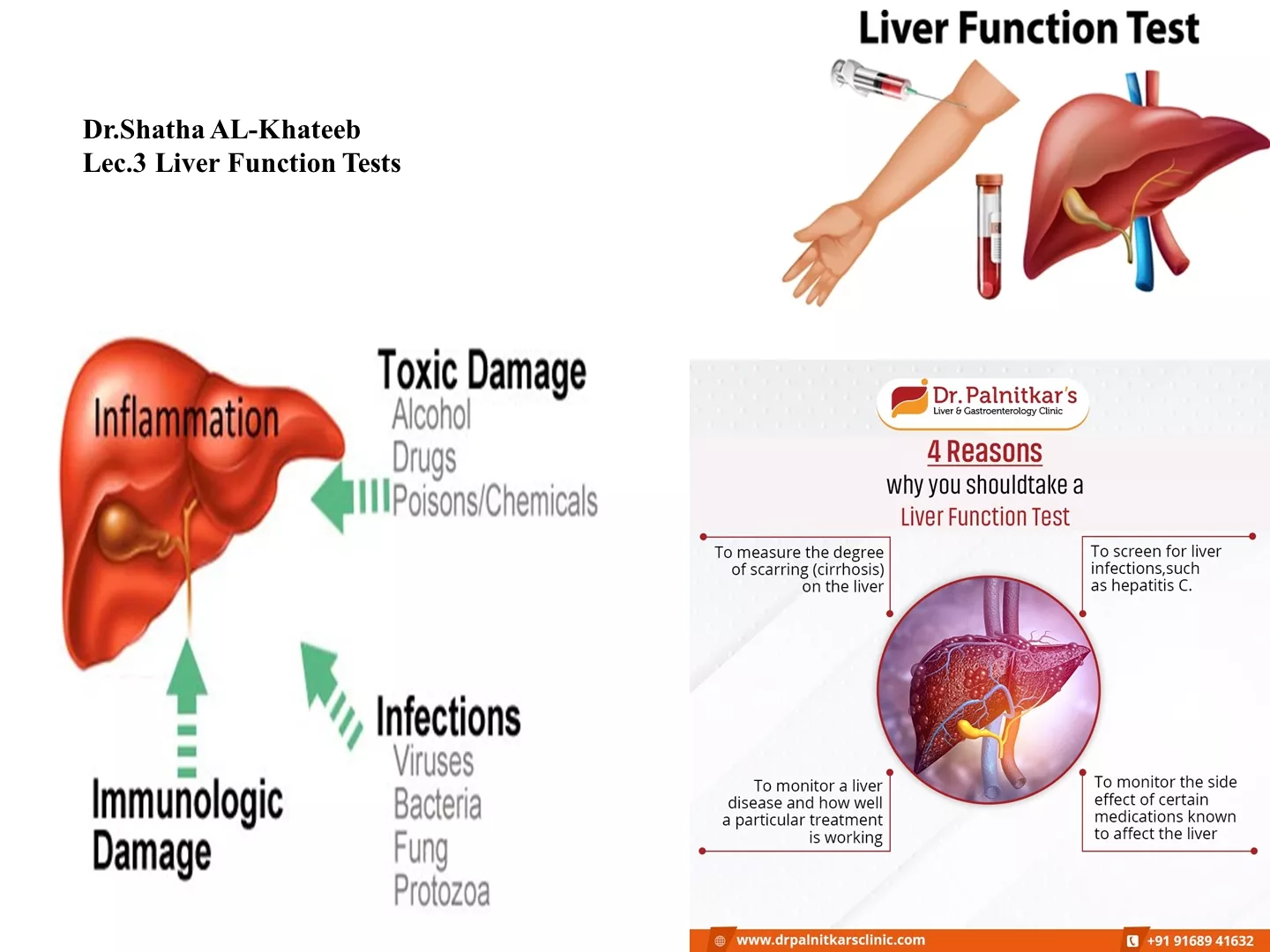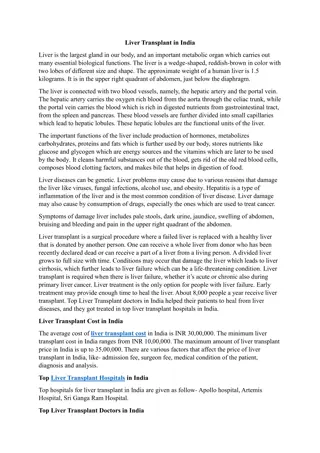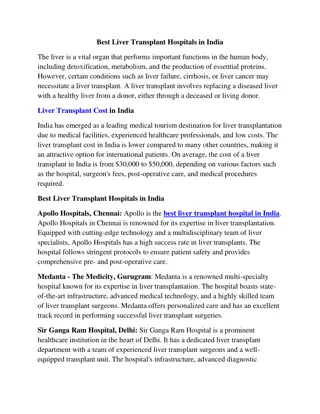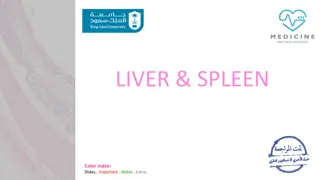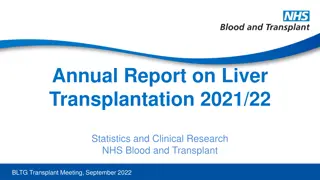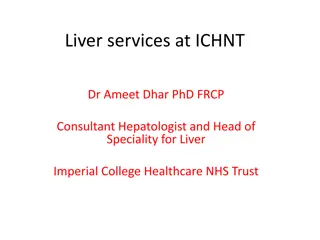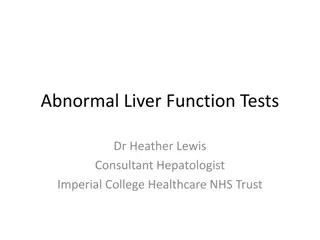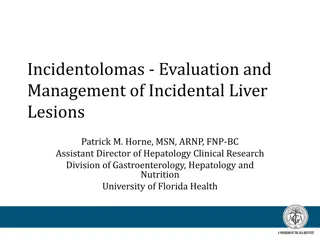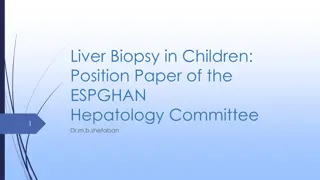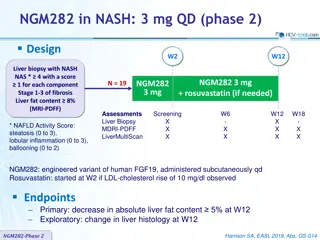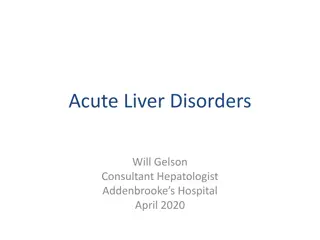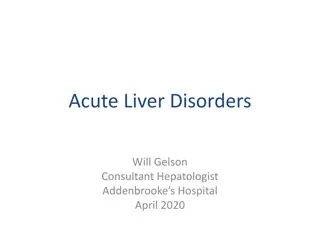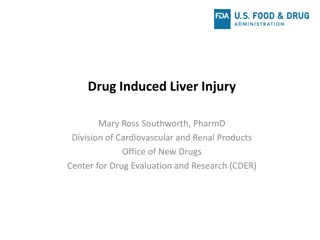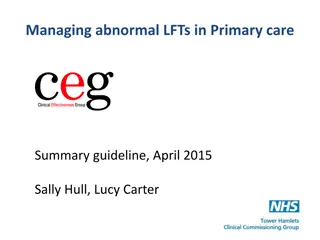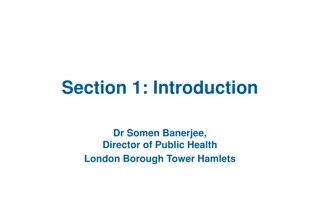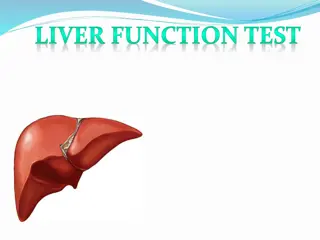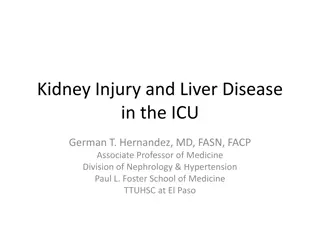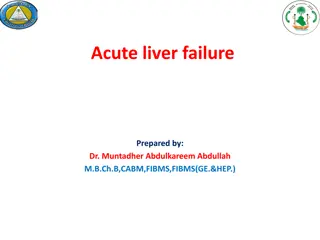Acute liver failure
Acute liver failure is a critical condition that results in severe impairment of liver function within a short period. Learn about the etiology, symptoms, diagnostic approach, potential complications, and treatment options associated with acute liver failure.
Download Presentation

Please find below an Image/Link to download the presentation.
The content on the website is provided AS IS for your information and personal use only. It may not be sold, licensed, or shared on other websites without obtaining consent from the author.If you encounter any issues during the download, it is possible that the publisher has removed the file from their server.
You are allowed to download the files provided on this website for personal or commercial use, subject to the condition that they are used lawfully. All files are the property of their respective owners.
The content on the website is provided AS IS for your information and personal use only. It may not be sold, licensed, or shared on other websites without obtaining consent from the author.
E N D
Presentation Transcript
Acute liver failure Prepared by: Dr. Muntadher Abdulkareem Abdullah M.B.Ch.B,CABM,FIBMS,FIBMS(GE.&HEP.)
Objectives: At the end of this lecture you must be able to know: 1. What is ALF ? 2. What is the etiology of ALF ? 3. WHAT IS THE PRINCIPLE APPROCH TO ALF ?
30 year old female patient presented with 1 day Hx of disturbed conscious level , she was unwell for the last week with Hx of jaundice, fever, abdominal distension , nausea and vomiting 1. What is the most likely cause of her impaired sensorium? 2. What do you expect to find in the examination of this patient? 3. What are the Ix needed to assess the patient condition? 4. What are the Ix needed to assess the underlying etiology? 5. What are the complications expected in this patient? 6. What are the lines of Mx ? 7. What is the definitive treatment ? 8. What is the long term sequels if the patient survive his current condition ?
An 18 year old woman presents to the emergency department having taken an overdose of an unknown quantity of paracetamol. Which of the following statements regarding the clinical presentation and progress of paracetamol overdose is true? A. Deterioration from grade 1 to grade 4 encephalopathy typically takes place over several days B. It has a worse outcome than acute liver failure of other aetiologies C. If the patient recovers from acute liver failure, cirrhosis development is almost inevitable D. Jaundice typically occurs before prothrombin time (PT) prolongation E. Pancreatitis can be an accompanying complication
Acute Liver Failure: Acute liver failure describes the clinical syndrome of severe impairment of liver function Within 6 months of the onset of symptoms, which include: 1. Encephalopathy 2. Coagulopathy 3. Jaundice - The acute onset of liver disease with no known evidence of chronic liver disease. - Biochemical and/or clinical evidence of severe liver dysfunction - Hepatic-based coagulopathy prothrombin time [PT] 15 seconds or international normalized ratio [INR] 1.5 that is not corrected by parenteral vitamin K in presence of clinical hepatic encephalopathy PT is 20 seconds or INR is 2.0 in presence or absence of hepatic encephalopathy.
Classification 1) Hyperacute <7 days 2) Acute 8 28 days 3) Subacute 29 days to 12 weeks This duration represent the time from the onset of jaundice to the development of hepatic encephalopathy. An alternative classification 1) Fulminant : liver failure - time from jaundice to encephalopathy within 8 weeks in the absence of pre-existing liver disease. 2) sub-fulminant : - Late onset liver failure describes encephalopathy developing more than 8 weeks (but less than 24 weeks) after the first symptoms.
Causes : 1.Drugs and toxins (70 80%) like Acetaminophen, Halothane,Antituberculous drugs,Methylenedioxymethamphetamine(MDMA, 'ecstasy'),Herbal remedies , Amanita phalloides 2.Viral hepatitis (5%) : hepatitis A , E,B,D, 3.Autoimmune hepatitis(<5%) 4- cryptogenic (5-10%) Non-A E viral hepatitis 5.Miscellaneous (<5%) : Wilson's disease, Acute fatty liver of pregnancy, Shock and cardiac failure,Budd Chiari syndrome Leptospirosis,Liver metastases,Lymphoma, Reye;s syndrome.
Clinical features The patient, previously having been well, typically develops non-specific symptoms such as nausea and malaise. - Progressive Jaundice. - Vomiting is common - Abdominal pain. - Fetor hepaticus - Rapid decrease in liver size without clinical improvement - Ascites - Tachycardia, hypotension, hyperventilation and fever are later features - Later coma and encephalopathy features.
Investigations: The investigation can be divided into that to assess the synthetic hepatic functions , overall systems impairment and that to assess the etiology of the fulminant hepatic function A. Investigation for the assessment of hepatic and body system impairment: 1) Hematology : - The prothrombin time to the assessment of the severity of the clinical situation, and its progress. - Hemoglobin and white count are obtained. - A falling platelet count may reflect disseminated intravascular coagulation. 2) Biochemical : - Blood glucose - Blood urea - Serum electrolytes - Serum creatinine - Serum bilirubin - Serum albumin initially normal but later low albumin carries poor prognosis - Transaminases of little prognostic values as levels tends to fall as condition worsens
Investigations to know the etiology : Toxicology screen of blood and urine HBsAg, IgM anti-HBc IgM anti-HAV Anti-HEV, HCV, cytomegalovirus, herpes simplex, Epstein Barr virus Caeruloplasmin, serum copper, urinary copper, slit-lamp eye examination Autoantibodies: ANA, ASMA, LKM, SLA Immunoglobulins Ultrasound of liver and Doppler of hepatic veins
Manegments Patients with acute liver failure should be treated in a high dependency or intensive care unit as soon as progressive prolongation of the PT occurs or hepatic encephalopathy is identified General measures: Monitoring in acute liver failure Cardiorespiratory Pulse Blood pressure Central venous pressure Respiratory rate Neurological Intracranial pressure monitoring (specialist units) Conscious level Fluid balance Hourly output (urine, vomiting, diarrhoea) Input: oral, intravenous Blood analyses Arterial blood gases Peripheral blood count (including platelets) Sodium, potassium, HCO3 , calcium, magnesium Creatinine, urea Glucose (2-hourly in acute phase) Prothrombin time Infection surveillance Cultures: blood, urine, throat, sputum, cannula sites
Adverse prognostic criteria in acute liver failure* Paracetamol overdose H+ >50 nmol/L (pH <7.3) at or beyond 24 hours following the overdose Or Serum creatinine >300 mol/L ( 3.38 mg/dL) plus prothrombin time >100 secs plus encephalopathy grade 3 or 4 Non-paracetamol cases Prothrombin time >100 secs Or Any three of the following: Jaundice to encephalopathy time >7 days Age <10 or >40 years Indeterminate or drug-induced causes Bilirubin >300 mol/L ( 17.6 mg/dL) Prothrombin time >50 secs Or Factor V level <15% and encephalopathy grade 3 or 4 The definitive treatment for fulminant hepatic failure is liver transplantation
Complications of acute liver failure Encephalopathy and cerebral oedema Hypoglycaemia Metabolic acidosis Infection (bacterial, fungal) Renal failure Multi-organ failure (hypotension and respiratory failure)
Hepatic encephalopathy The brain is exposed to increased levels of ammonia, neurotransmitters and their precursors because of failed hepatic clearance result in neurological and psychiatric components. Features of encephalopathy can be separated into changes in consciousness, personality, intellect and speech, disturbed consciousness with disorder of sleep is usual. Hypersomnia appears early and progresses to reversal of the normal sleep pattern. Speech is slow and slurred and the voice is monotonous. The most characteristic neurological abnormality is the flapping tremor (asterixis). Coma at first resembles normal sleep, but progresses to complete unresponsiveness.
Investigation : - Cerebrospinal fluid - usually clear and under normal pressure , cell count is normal - EEG changes occur very early even before psychological or biochemical disturbances. -CT scan to show cerebral oedema and cortical atrophy Treatment of hepatic encephalopathy Treatment broadly divides into three areas: 1.Identification and treatment of the precipitating cause. 2. Intervention to reduce the production and absorption of gut-derived ammonia and other toxins. Alteration of enteric bacteria and the colonic environment by non absorbable antibiotics, oral lactulose and stimulation of colonic emptying - enemas, lactulose ( of limited significant in ALF) 3. Agents to modify neurotransmitter balance directly- bromocriptine, flumazenil (benzodiazepine antagonist) limited clinical value at present.
Treatment of cerebral oedema - Head should be elevated to 30 degrees -High levels of PEEP should be avoided it may increase hepatic venous pressure and intracranial pressure - Mannitol bolus of 0.5 g/kg as 20 % solution over 15 minutes can be repeated if serum osmolality less than 320 mOsm/L - Other methods 3% hypertonic saline N.B. Steroid are not indicated in treatment of cerebral oedema in ALF as it may complicate infection AND cause gastric erosions Treatment coagulopathy - Intravenous vitamin K to correct any reversible coagulopathy - Fresh frozen plasma (FFP) to be given in case of hemorrhage or if coagulopathy is severe (PT>60sec) - Thrombocytopenia to be corrected - Prophylaxis for gastrointestinal bleed administration of PPI , H2 blocker. Treatment Hepatorenal syndrome It is the most common cause of renal insufficiency in ALF secondary to renal vasoconstriction. Primarily focused on decreasing splanchnic circulation by : - Vasoconstrictors Terlipressin -Alpha agonist- nor-epinephrine, midodrine every effective in reversal of functional renal insufficiency. Liver transplantation is the definitive treatment of Hepatorenal syndrome in the sitting of ALF
